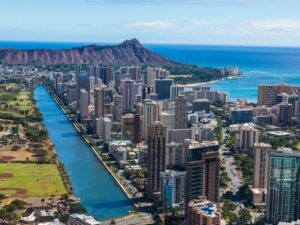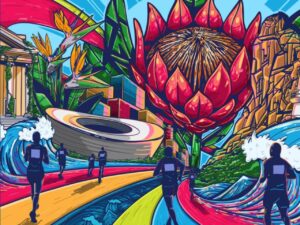Ranging from the weird to the wonderful, our planet is a treasure trove that’ll get you to pack up your luggage and go see these happenings up close.
Of course, in the case of a certain desert fire in Turkmenistan that’s been burning for four decades and counting, you might have to be a little careful when getting close.
Otherwise, the rest of the phenomena are pretty free game.
Let’s take a look at these incredible phenomena, with a little help from The Telegraph:

For the past 40 years, the Darvaza Gas Crater – otherwise known by its scary handle, the “Gates of Hell” – has been burning it up in the Karakum Desert in Turkmenistan:
It was discovered in 1971 by Soviet geologists when the ground beneath their drilling rig collapsed, leaving a 70 metre-wide hole.
Since the hole was filled with poisonous gas, these geologists decided to set the crater alight. What they didn’t count on was the crater to burn for four decades straight.
Ah well, we live and we learn. Just take care when you’re approaching it.

Pretty cool, huh? This scenic location is the Le Morne Peninsula in Mauritius.
To the naked eye, it looks like there’s an underwater waterfall here, but that’s not quite the truth:
The arresting sight before you is in fact an optical illusion caused by shifting sand and silt and the flow of underwater currents.
Oh well, nothing can stop us from pretending that it’s an underwater waterfall, right?

If you’re ever heading out to Turkey, you’ve got to take a balloon ride over the Cappadocia:
These “fairy chimneys” are the signature feature of Turkey’s volcanic wonderland.

If you’ve ever watched Avatar, these sandstone formations in the sub-tropical forests of Zhiangjiajie in China central might look familiar to you, as they provided James Cameron with inspiration.

It’s like Vincent van Gogh’s “The Starry Night” … but in a cave!
You’ll find the Waipu Cave in New Zealand to be a glowing experience, thanks to the critters that live in it:
Arachnocampa luminosa [New Zeland glow worms] begin to glow soon after hatching, and thrive in the humid, dark environment.

If you’re over in Russia for the World Cup, and want to take a break from the accompanying drama, why not visit the incredible 640 kilometre-long Lake Baikal:
These bubbles frozen beneath the surface are trapped in methane emissions which rise from the creatures living below.
A little gross, but it’s still pretty to look at.
To check out the other fantastic natural phenomena hotspots, click here.
[source:telegraph]





